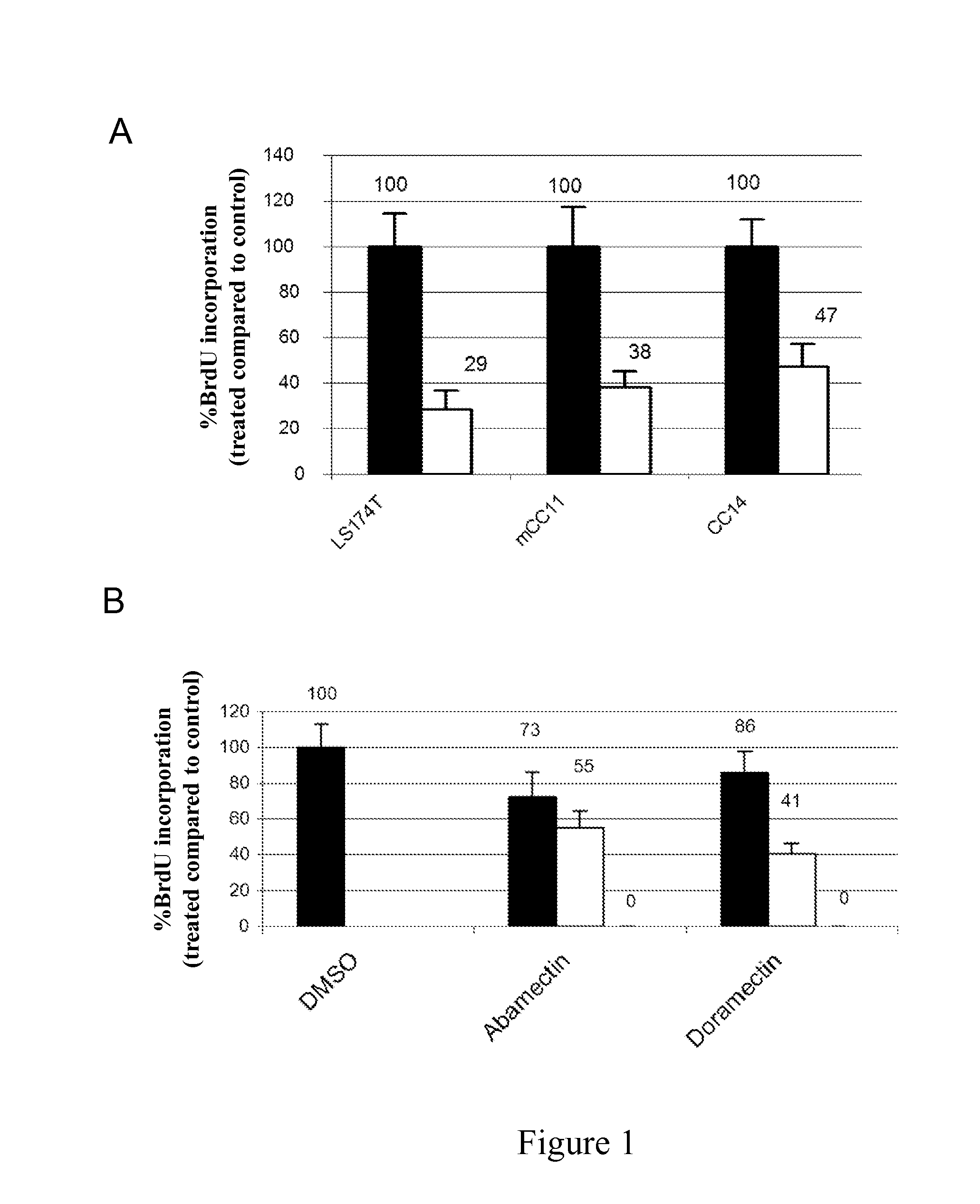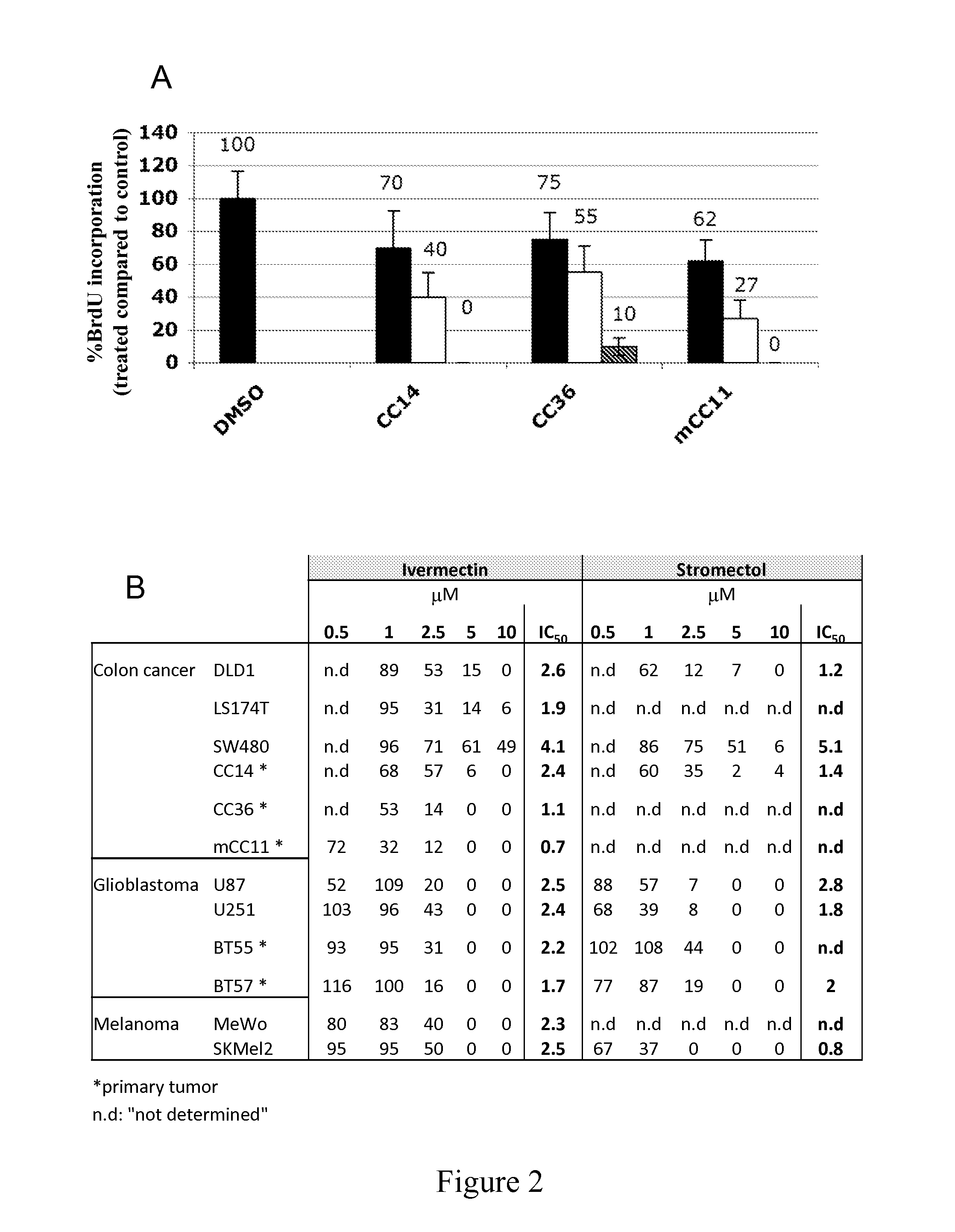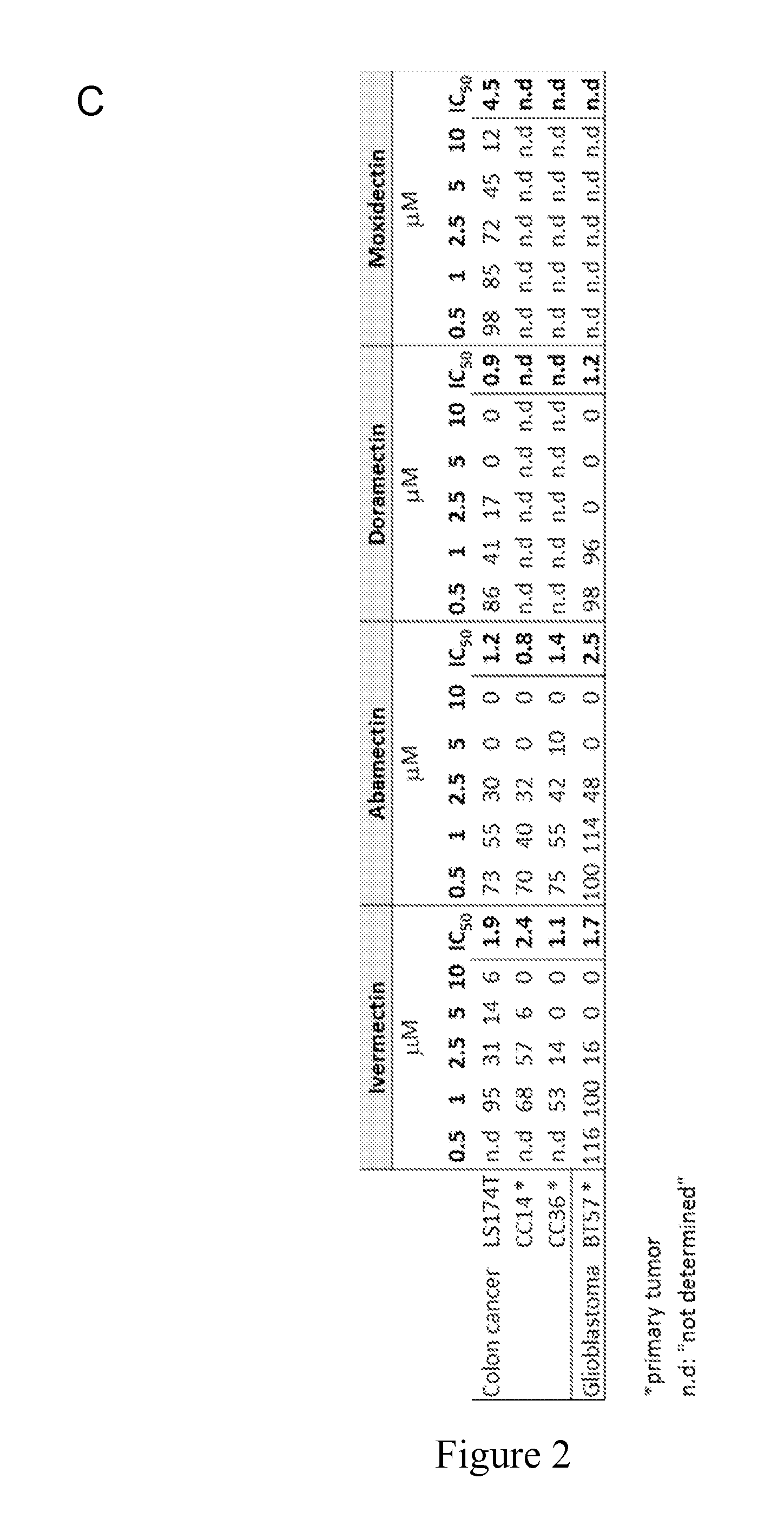Macrocyclic lactones and use thereof
a technology of macrocyclic lactones and colorectal cancer, applied in the direction of biocide, drug composition, nervous disorder, etc., can solve the problems of poor prognosis at later stages, uncontrolled cell growth, and low survival rate of breast and prostate cancer patients
- Summary
- Abstract
- Description
- Claims
- Application Information
AI Technical Summary
Benefits of technology
Problems solved by technology
Method used
Image
Examples
example 1
Effects of Macrocyclic Lactones on Proliferation in Human Colon Cancer Cells
[0121]In order to test the effects of macrocyclic lactones according to the invention in colorectal cancer, the following assay was carried out:
[0122]Human colon adenocarcinoma cell line (LS174T), human primary colon cancer cells (CC14) and primary metastatic cells (mCC11) were treated with Avermectin B1 MicroSource Discovery systems, CT, USA), 5 μM. Control cells were treated with equivalent concentration of DMSO. 48 h after treatment, the percentage of BrdU incorporation was calculated for cells treated with Avermectin B1 as compared to control cells as follows: the number of BrdU positive cells over total number of cells expressed as percentage compared to control cells treated with DMSO only. Cells were cultivated in standard conditions (37° C., 5% CO2) in DMEM containing 10% Fetal Calf Serum.
[0123]The data show that Avermectin B1 treatment decreases to a minimum of half the proliferation in each type of...
example 2
Specificity of Macrocyclic Lactones on Wnt Pathway
[0124]In order to test the specificity of the macrocyclic lactones in the blocking of the Wnt pathway useful in the treatment of human colon carcinomas (Varnat et al., 2010, EMBO Molecular Medicine, 2(11), pages 440-457), the following assay was carried out: Key Wnt target gene expression was determined by quantitative real time PCR in LS174 colon adenocarcinoma cell line expressing a dominant negative TCF4 cDNA (dnTCF4) or 12 h after treatment with 5 μM Avermectin B1 (MicroSource Discovery systems, CT, USA). Control cell samples were treated with equivalent concentration of DMSO. Cells were cultivated in standard conditions as described in Example 1.
[0125]Expression levels of individual genes are shown as a percentage compared to their expression levels in control cells treated with DMSO only in the case of Avermectin B1, or transfected with control plasmid in the case of dnTCF4 and are shown in Table 1 below:
TABLE 1C-MYCAXIN2P21LGR...
example 3
Dose-Effect of Macrocyclic Lactones on Proliferation in Human Colon Cancer Cells
[0127]The same assay as described in Example 1 was carried out on human colon adenocarcinoma cell line (LS174T) where cell samples were either treated with Abamectin (Sigma #31732) or Doramectin (Sigma #33993) at three different concentration: 0.1, 1 and 5 μM. Control cells were treated with equivalent concentration of DMSO. 48 h after treatment, the percentage of BrdU incorporation was calculated for cells treated with each macrocyclic lactone as compared to control cells as described above. The data show that treatment both macrocyclic lactones decrease proliferation in a dose-dependent manner (FIG. 1B).
PUM
 Login to View More
Login to View More Abstract
Description
Claims
Application Information
 Login to View More
Login to View More - R&D
- Intellectual Property
- Life Sciences
- Materials
- Tech Scout
- Unparalleled Data Quality
- Higher Quality Content
- 60% Fewer Hallucinations
Browse by: Latest US Patents, China's latest patents, Technical Efficacy Thesaurus, Application Domain, Technology Topic, Popular Technical Reports.
© 2025 PatSnap. All rights reserved.Legal|Privacy policy|Modern Slavery Act Transparency Statement|Sitemap|About US| Contact US: help@patsnap.com



